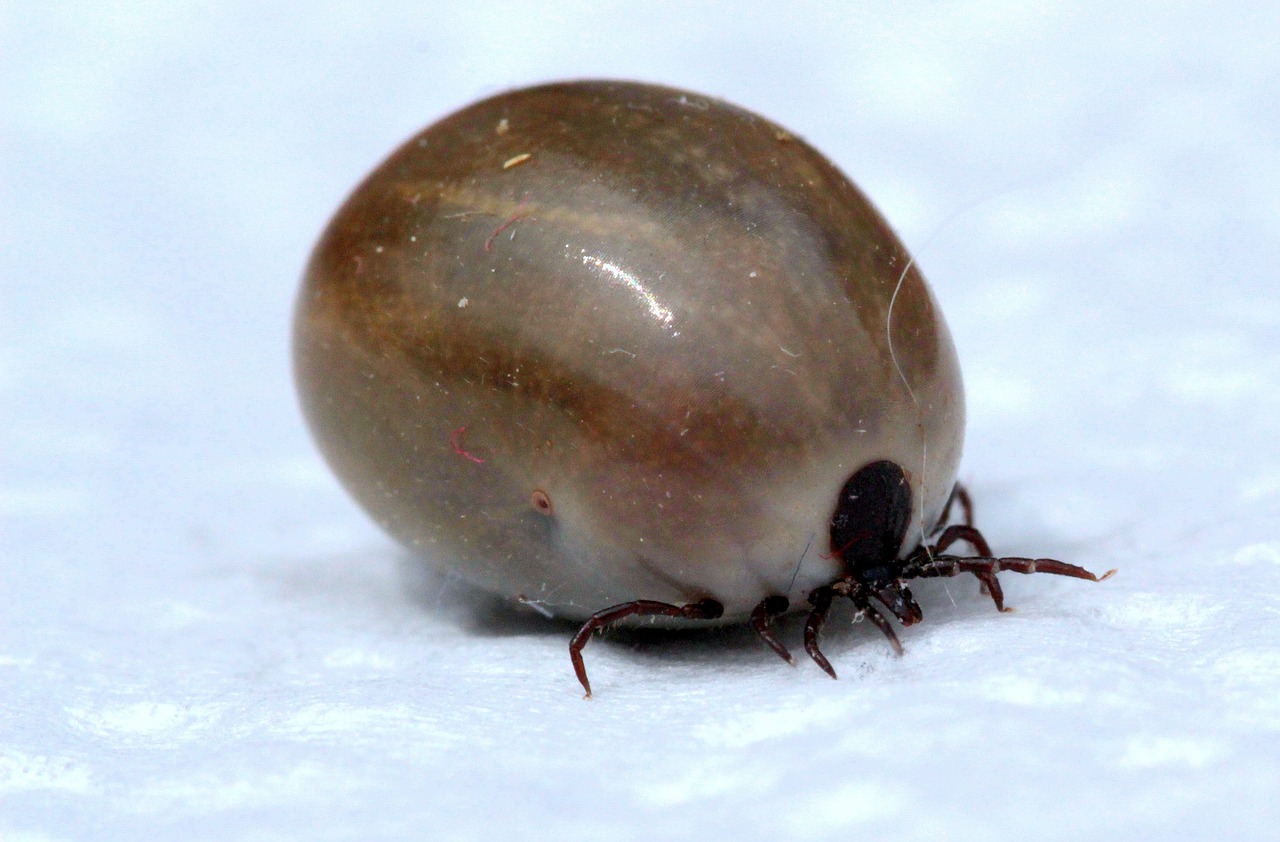A How To Guide For Removing Ticks From Your Pet & How To Prevent Tick Bites

These examinations should encompass their entire body, including the back, belly, armpits, between the toes, legs, facial regions, and inside the ears. If you encounter any unusual bumps or swollen areas, gently part the hair to inspect whether a tick has latched onto your pet's skin.
Ticks, some as tiny as a pinhead, can vary in color from brown to tan and black, featuring eight legs. When you spot an attached tick on your pet, seeking veterinary assistance is advisable to guarantee the tick's proper removal and subsequent examination. Your veterinarian can identify the tick type and ensure complete parasite removal.
Should you need to remove the tick on your own and cannot immediately consult your veterinarian, ensure you have the following tools at your disposal: gloves (as ticks can transmit diseases to humans), tick remover tweezers, antiseptic, rubbing alcohol, and a Ziploc bag.
Step 1: Using Tweezers
-
With the tweezers, carefully grasp the tick as close to your pet's skin as possible, careful not to pinch the skin.
-
Apply slow and steady pressure to extract the tick without twisting or turning the tweezers.
-
Confirm that you've removed the entire tick.
Step 2: Safely Dispose of the Tick
-
Place the tick in a Ziploc bag containing rubbing alcohol, as alcohol is effective at neutralizing the tick.
-
Seal the bag securely, as you may need to present it to your veterinarian.
-
Ensure you clean your pet's skin using antiseptic.
Step 3: Disinfect Your Tools
-
Sterilize the tweezers with rubbing alcohol.
Step 4: Personal Hygiene
-
Remove your gloves and wash your hands thoroughly to minimize disease transmission.
Step 5: Monitor Your Pet
-
Keep a vigilant eye on the site from which the tick was removed to check for any signs of irritation over the following week.
Preventing Tick-Borne Diseases in Your Pet
Tick-borne illnesses can pose significant challenges in diagnosis and treatment, underscoring the importance of preventing tick bites in your pet. To safeguard your furry friend, consider these preventive measures:
Use Preventatives Year-Round: Tick bites can occur throughout the year, so it's advisable to use tick preventatives consistently, even during colder months.
Select a Suitable Product: Choose a tick preventative that aligns with your pet's lifestyle. For instance, if your dog frequently swims, opt for a product that remains effective in water.
Appropriate Product for Your Pet: Ensure you use a product designed for your specific pet; avoid using dog products on cats and vice versa.
Check for Tick Protection: Review the product label by verifying that your chosen flea protection product also covers ticks.
Adhere to Application Guidelines: Follow the tick preventative product's recommended frequency and application instructions.
No Assumptions in Urban Areas: Don't assume urban areas are free from ticks; these parasites can be present in various environments, regardless of location.
Consult About Lyme Disease Vaccine: Speak to your veterinarian about the availability and suitability of the Lyme disease vaccine for your pet.
Keep Cats Indoors: For feline friends, consider keeping them indoors to reduce tick exposure.
Regular Tick Checks: Inspect your dog for ticks, especially after outdoor activities in grassy areas or forested terrain.
Use a Lint Roller: After returning indoors, use a lint roller to check for ticks on your pet's fur; this quick check can help detect ticks before they attach.
Prompt Tick Removal: If you find a tick, remove it promptly. A tick typically takes 24 to 48 hours to transmit an infection to its host.
Recognizing Symptoms of Tick-Borne Diseases
Unlike humans, pets do not develop a characteristic bull's-eye rash at the site of a tick bite. Symptoms of tick-borne diseases, such as Lyme disease, may not become evident until weeks or months after a tick bite. These symptoms are often nonspecific, making diagnosis challenging and time-consuming. If you observe any of the following signs in your pet, consult your veterinarian:
Lethargy: Noticeable lack of energy or enthusiasm.
Joint Pain or Swelling: Painful or swollen joints.
Skin Rash: Unusual rashes or skin irritations.
Fever: Elevated body temperature.
Weight Loss: Unexplained reduction in body weight.
Decreased Appetite or Thirst: Loss of interest in eating or drinking.
Inflammation Near Bite Site: Swelling or redness around a tick bite area.
Neurological Issues: Problems related to the nervous system.
Promptly seeking veterinary care if you suspect tick-borne illness is crucial to ensure timely diagnosis and treatment for your pet's well-being.
Get insurance plans with wide-ranging coverage options













